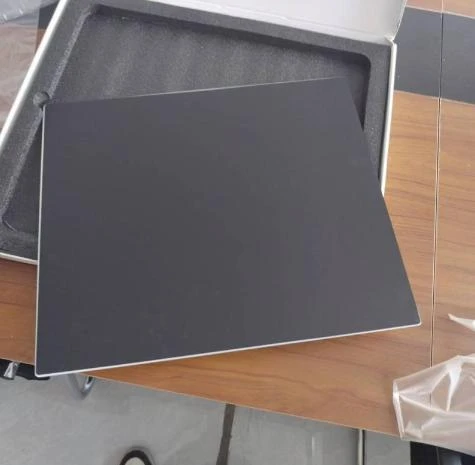Understanding Low Iron Glass Properties, Benefits, and Applications
Low iron glass, often referred to as ultra-clear or high-transparency glass, is a specialized type of glass that has significantly reduced levels of iron oxide content, typically less than 0.1%. This reduction in iron content results in a clearer appearance, allowing for higher light transmission and minimal distortion of color. Understanding low iron glass is essential for various applications, from architecture to art and technology.
One of the defining features of low iron glass is its remarkable clarity. Traditional glass can present a greenish hue due to the presence of iron oxide, which can interfere with the aesthetic qualities of materials, particularly when large spans of glass are used in design. In contrast, low iron glass provides a more neutral color balance, making it ideal for applications where color accuracy and clarity are paramount. This characteristic is particularly valuable in the context of modern architecture, where expansive glass facades are employed to create a seamless integration between indoor and outdoor spaces.
Understanding Low Iron Glass Properties, Benefits, and Applications
Low iron glass goes beyond aesthetic appeal and energy efficiency; it also boasts impressive durability. It can be sourced in various thicknesses and formats, making it suitable for various applications, including both indoor and outdoor environments. Its resistance to UV radiation helps prevent the fading of materials inside buildings, making it an ideal choice for museums, galleries, and retail spaces where maintaining the integrity of displayed items is crucial.
what is low iron glass
In addition to architectural uses, low iron glass finds applications in the design and manufacturing of high-end products. For instance, it is commonly used in the production of glass furniture, such as tables and shelving units, where clarity and elegance are required. In the realm of technology, low iron glass is often used in screen manufacturing for televisions, smartphones, and tablets, ensuring high-definition displays with true color reproduction.
Another area where low iron glass excels is in solar panel technology. The transparency and light transmission properties of this type of glass enhance the efficiency of solar panels by allowing more sunlight to reach the photovoltaic cells. As the demand for renewable energy sources continues to rise, the role of low iron glass in the solar industry is expected to expand, contributing to the development of more efficient and sustainable energy solutions.
While the benefits of low iron glass are substantial, it is also worth mentioning that its production and handling require specialized processes. Due to its composition, low iron glass can be more expensive than standard glass. However, the long-term benefits, including improved energy efficiency and reduced replacement costs, often outweigh the initial investment.
In conclusion, low iron glass is a versatile and valuable material with applications across various industries. Its exceptional clarity, light transmission qualities, and durability make it a preferred choice for architects, designers, and manufacturers. As industries continue to strive for energy efficiency and aesthetic excellence, low iron glass will undoubtedly play a prominent role in the evolution of modern design and technology, ensuring that both functionality and beauty can coexist harmoniously. As we look to the future, the potential applications and advancements in low iron glass will likely expand, offering even more innovative solutions.
 Afrikaans
Afrikaans  Albanian
Albanian  Amharic
Amharic  Arabic
Arabic  Armenian
Armenian  Azerbaijani
Azerbaijani  Basque
Basque  Belarusian
Belarusian  Bengali
Bengali  Bosnian
Bosnian  Bulgarian
Bulgarian  Catalan
Catalan  Cebuano
Cebuano  Corsican
Corsican  Croatian
Croatian  Czech
Czech  Danish
Danish  Dutch
Dutch  English
English  Esperanto
Esperanto  Estonian
Estonian  Finnish
Finnish  French
French  Frisian
Frisian  Galician
Galician  Georgian
Georgian  German
German  Greek
Greek  Gujarati
Gujarati  Haitian Creole
Haitian Creole  hausa
hausa  hawaiian
hawaiian  Hebrew
Hebrew  Hindi
Hindi  Miao
Miao  Hungarian
Hungarian  Icelandic
Icelandic  igbo
igbo  Indonesian
Indonesian  irish
irish  Italian
Italian  Japanese
Japanese  Javanese
Javanese  Kannada
Kannada  kazakh
kazakh  Khmer
Khmer  Rwandese
Rwandese  Korean
Korean  Kurdish
Kurdish  Kyrgyz
Kyrgyz  Lao
Lao  Latin
Latin  Latvian
Latvian  Lithuanian
Lithuanian  Luxembourgish
Luxembourgish  Macedonian
Macedonian  Malgashi
Malgashi  Malay
Malay  Malayalam
Malayalam  Maltese
Maltese  Maori
Maori  Marathi
Marathi  Mongolian
Mongolian  Myanmar
Myanmar  Nepali
Nepali  Norwegian
Norwegian  Norwegian
Norwegian  Occitan
Occitan  Pashto
Pashto  Persian
Persian  Polish
Polish  Portuguese
Portuguese  Punjabi
Punjabi  Romanian
Romanian  Russian
Russian  Samoan
Samoan  Scottish Gaelic
Scottish Gaelic  Serbian
Serbian  Sesotho
Sesotho  Shona
Shona  Sindhi
Sindhi  Sinhala
Sinhala  Slovak
Slovak  Slovenian
Slovenian  Somali
Somali  Spanish
Spanish  Sundanese
Sundanese  Swahili
Swahili  Swedish
Swedish  Tagalog
Tagalog  Tajik
Tajik  Tamil
Tamil  Tatar
Tatar  Telugu
Telugu  Thai
Thai  Turkish
Turkish  Turkmen
Turkmen  Ukrainian
Ukrainian  Urdu
Urdu  Uighur
Uighur  Uzbek
Uzbek  Vietnamese
Vietnamese  Welsh
Welsh  Bantu
Bantu  Yiddish
Yiddish  Yoruba
Yoruba  Zulu
Zulu 

